April in the garden is the last month when you can safely dig up and move trees and shrubs to a new location while it is also the best month to plant new container grown trees and with this in mind I called time on several small specimen oak trees that I put in three years ago and which never really took off , barely stayed alive really so enough is enough , time to be ruthless and out they came .
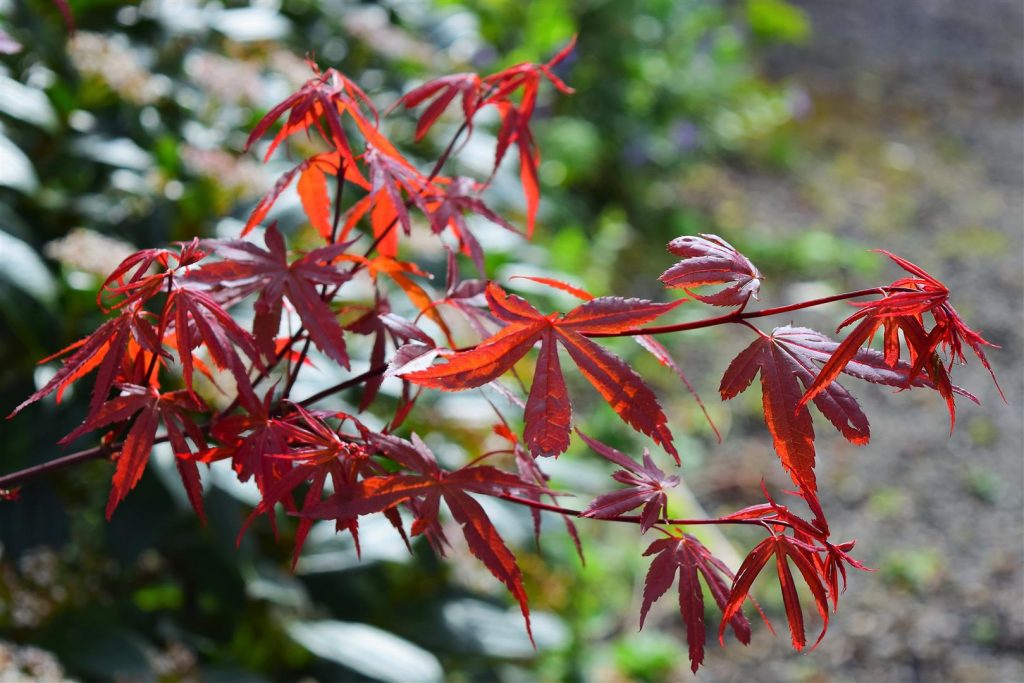
My default trees normally boil down to two choices , silver birch jacquemontii and mountain ash variety Lutescens Moonlight however the lutescens was not available at Clonmel Garden Centre but in the tree section I came across a single specimen of another favourite tree , a parrotia persicara also known as Ironwood originally from Iran , a slow growing compact tree with interesting structure and great leaf colour , reddish hue throughout the summer months but with absolutely gorgeous autumn colour , slow growing but worth the wait . I didn’t want another silver birch in this area of the top field as there are already a good mixture of jacquemontii and river birch and opted for a tree I had not planted before , a weeping lime tree , tilia cordata , which if it grows and the deer leave it alone will have an interesting shape .
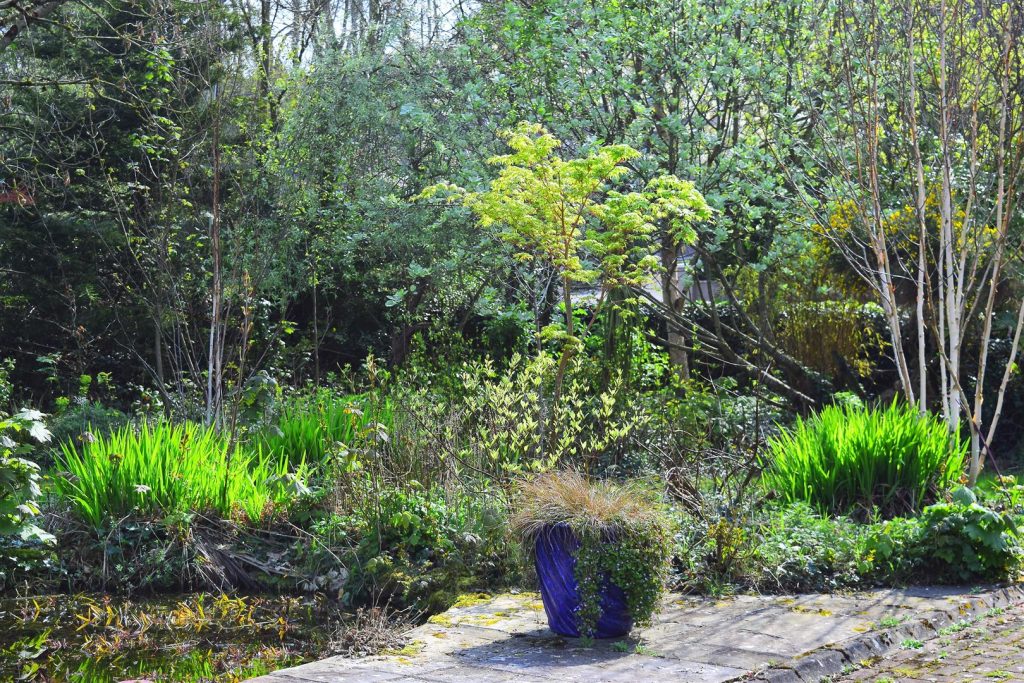
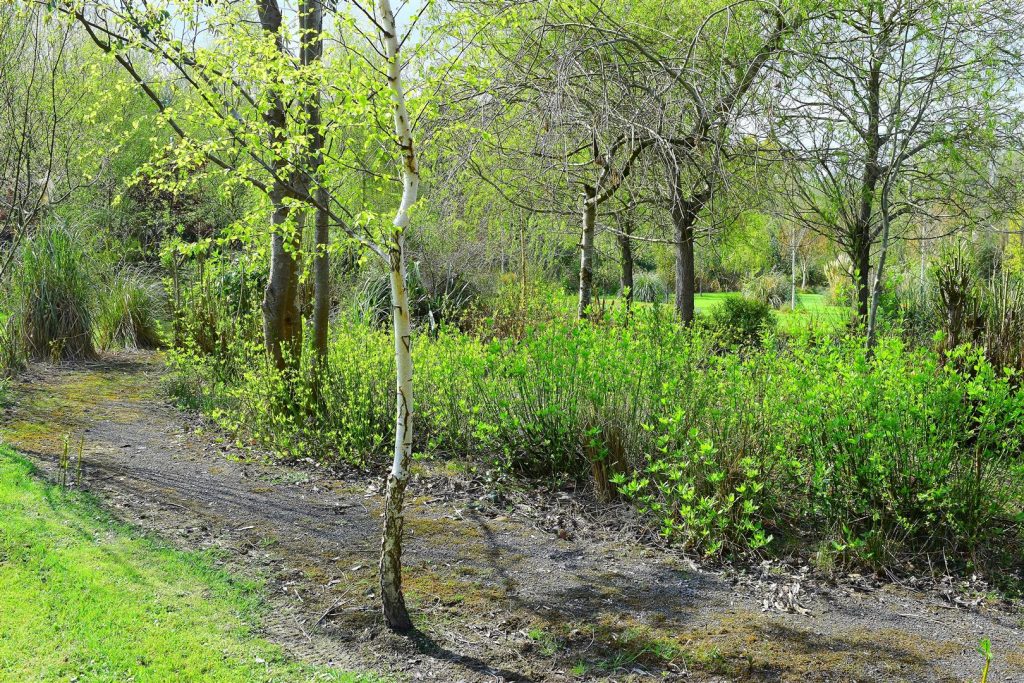
I say if it grows as today I was reading the March copy of Country Life , lent by a friend , a magazine which I hadn’t read in over thirty years and there in the garden section were the usual articles by Country Life garden experts giving lists of their favourite trees and shrubs to plant now . These were the type of articles I devoured at the start of my interest in gardening in the 1970’s and amazingly quite a few of the trees were still the same , snowy amelchiar , gleditia sunburst … all useless trees for typical garden soil and none of which ever grew for me .in These “experts” are writing from their perfect Kent soil , a gardener’s paradise but the real world is far from Kent and if you are beginning in gardening forget the garden writer’s “ Best trees and Shrubs ” and select trees that will grow for you in your location then go for a stroll around your neighbourhood gardens and take note of what is thriving … forget the hollwood style plants and you will have a lot less expensive mistakes and believe me I speak from experience !
These articles never tell you that most planted trees need shelter from strong winds and the writers are usually guys who grew up on Mummy & Daddy’s country estate with an old walled garden and who have permanent gardening staff , gardens with plenty of shelter and perfect soil so your tender little Japanese maple with those oh so delicate leaves that you rush out to buy on their recommendation will shrivel up and pop it’s clogs when you plant it in March in your wet soil and with a cold wind coming in from Siberia .
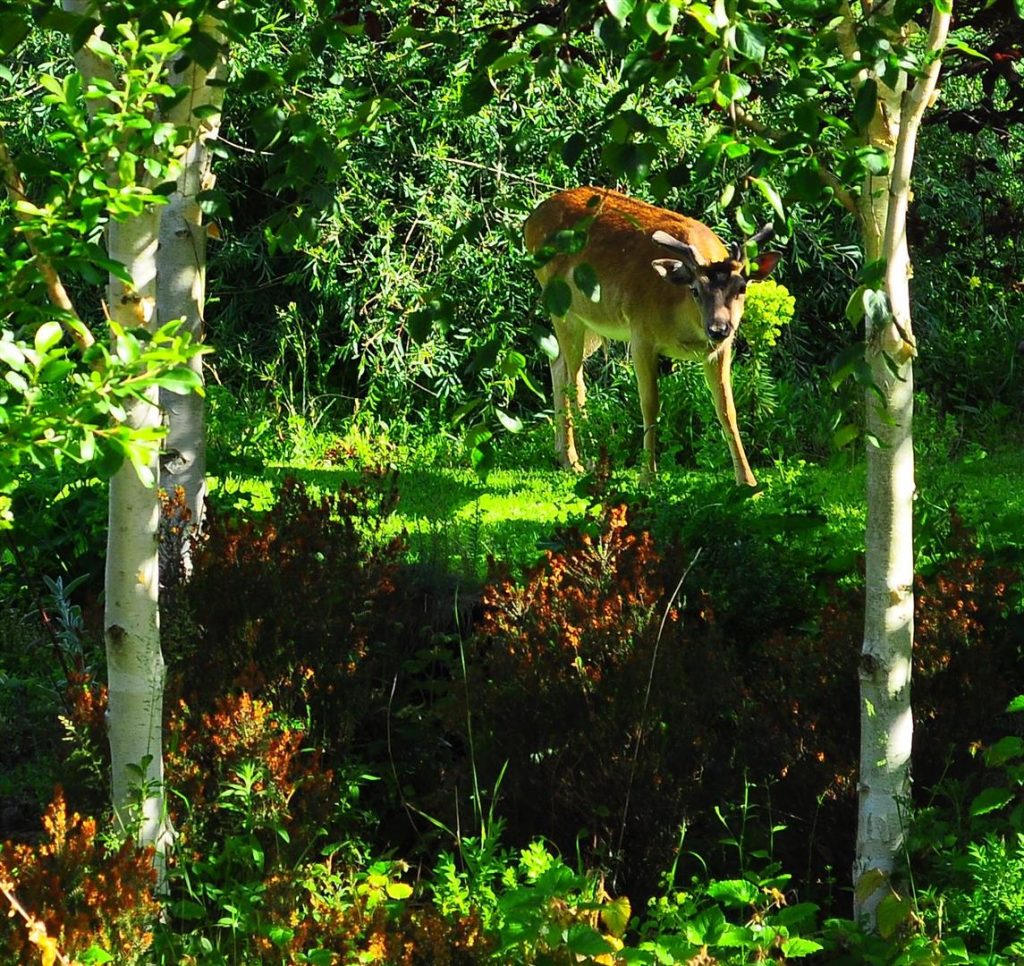
And then all her friends came !
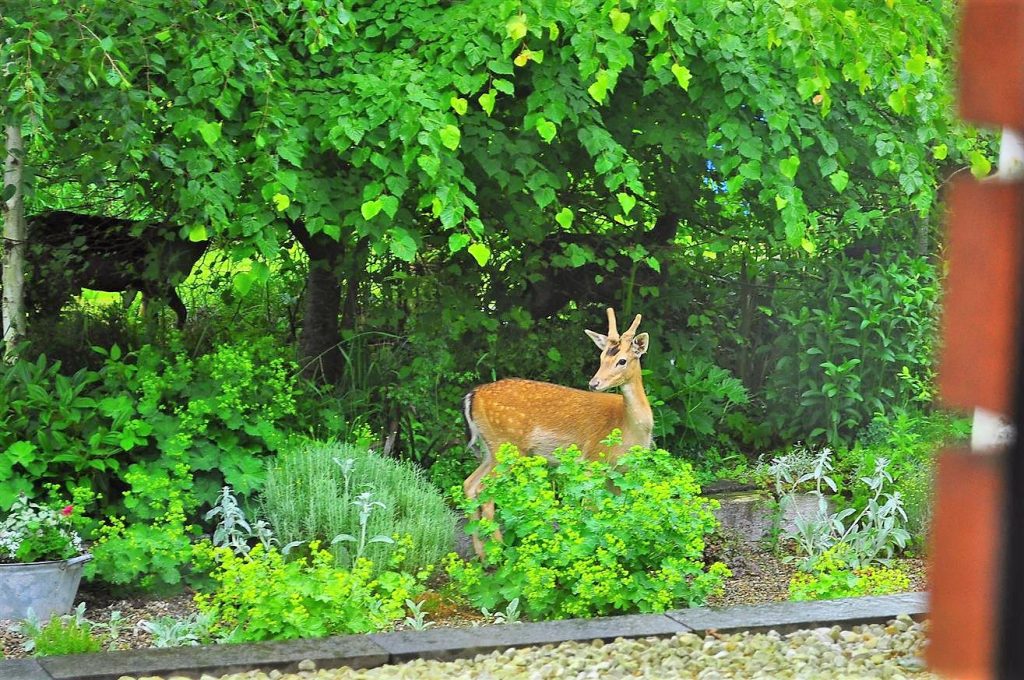
Last month I wrote about wild life in the garden and that it is not a particular focus for us but thinking about it after a few days I began to wonder do any of us really understand what wild life means in our gardens and basically what they do and why they choose your patch and that be it birds or animals , their driving force is to eat and to survive , the basic functions and to hell with how picturesque your perennial borders look in July , they are asking will it feed me , can I hide there and will I be killed and eaten there ?

We have two cats and the younger one at seven months is already killing mice and what most people don’t know or want to know is that your sleepy moggie kills on average 900 small birds and mice every year and the awful thing is that the domesticated cat doesen’t kill for food but for pleasure and they are sadistic monsters in how they play with their prey before getting bored and dispatching it . Our garden has it’s share of foxes passing through who go after chickens and are always looking for their next meal , our small bird population when not keeping an eye on the cats are terrified of the sparrow hawks that regularly swoop through the woodland area , the beautiful looking magpies kill small chicks of other species at an alarming rate , I could go on but nature is a cruel place and your average garden is a killing ground where anything bigger than you is likely to eat you… so while your little patch is idyllic for you when you spot wild life always remember it is a jungle out there for them where everything goes after anything smaller than itself and your garden is supporting a food chain .
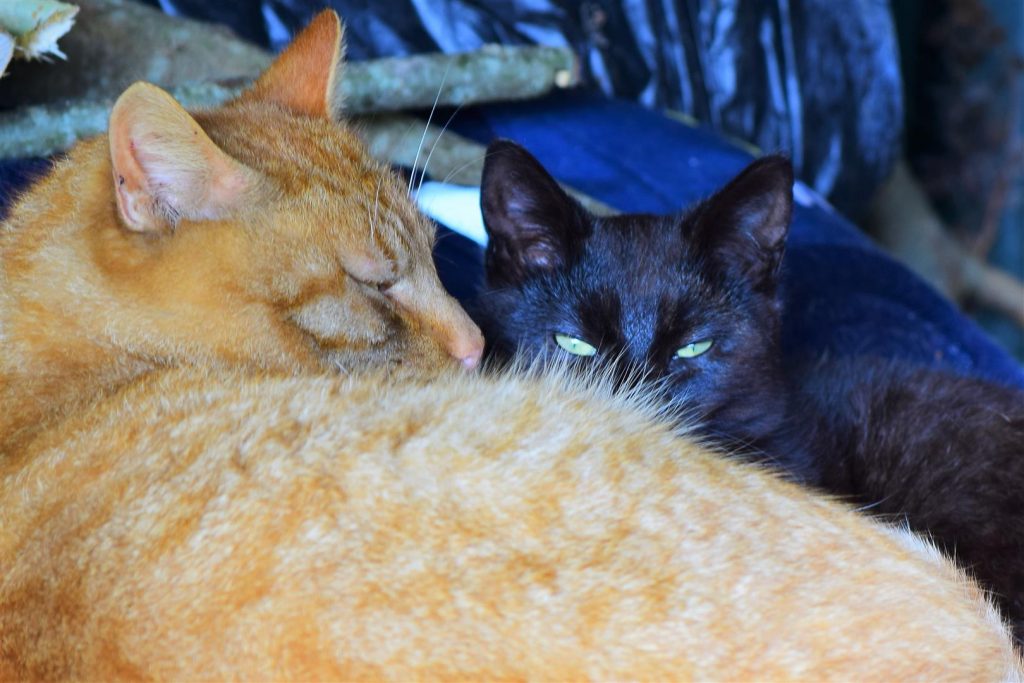
Of course you are probably thinking well I don’t really mind if cats kill mice and rats by the dozen , the more the merrier and red squirrels are preferable to grey ones and for myself I would like less deer as they eat everything in the garden and while we are compiling our hate list let’s not forget crows and sea gulls as they shit everywhere … before long we are on our way to a selective list of wild life , a far cry from where we started out loving wild life in the garden . The point is we don’t get to choose what wild life visits , lives or passes through our gardens otherwise we are selecting South African apartheid style or Nazi Germany euthanasia wild life but at the end of the day wild life , all wild life , is part of a food chain .
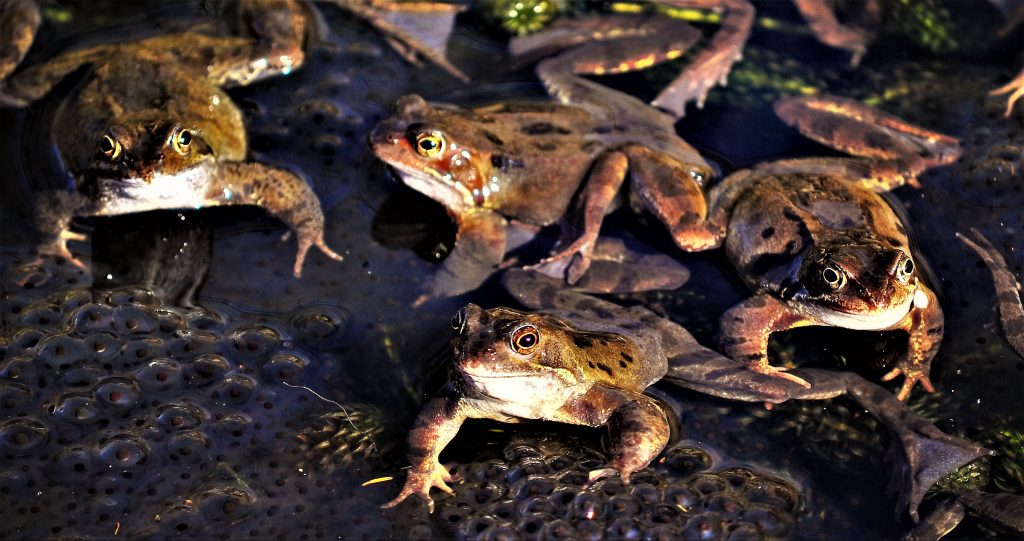
Regular readers will know I love self seeding plants and also that we allow certain “weeds” to grow unchecked and two such in flower in April are wild garlic and soapworth officinalis which will grow in walls and wherever it can lodge . We use every part of the wild garlic in soups and salads apart from the bulbs which are tiny and too much trouble to peel , the leaves are delicious chopped up in sandwiches and the taste is mild garlicky and not at all overpowering . Wild garlic spreads itself through woodland areas and you can dig up a clump and plant it where you would like it to grow , the leaves die back quickly and every trace of it is gone by July and generally it likes a bit of shade not full sun . The soapworth gets it’s name from being used in older times in washing clothes as a fabric cleaner .
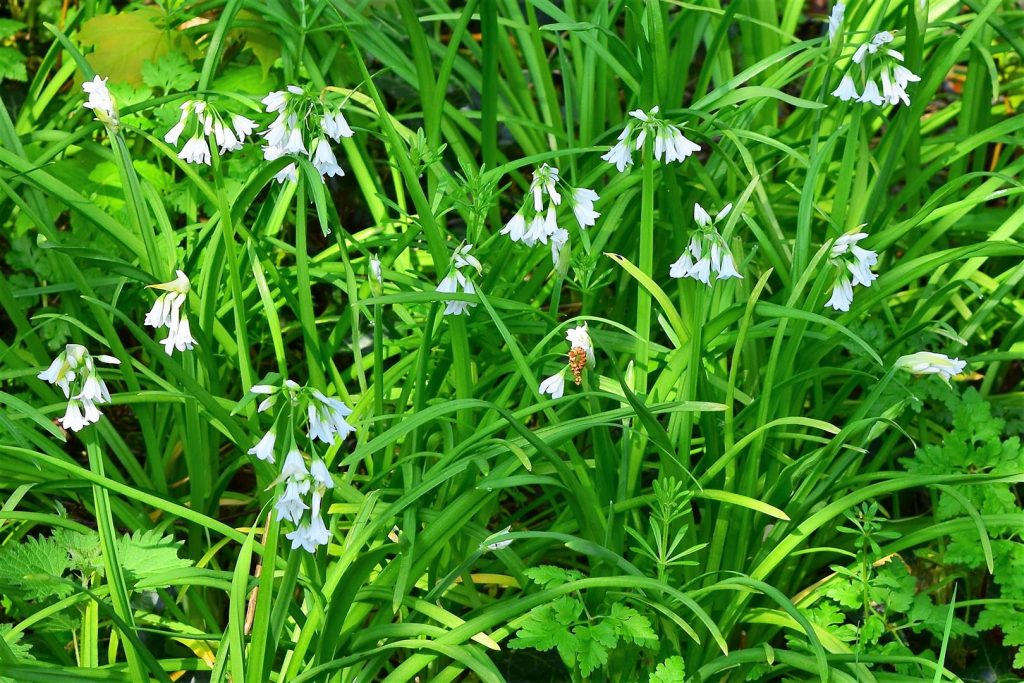
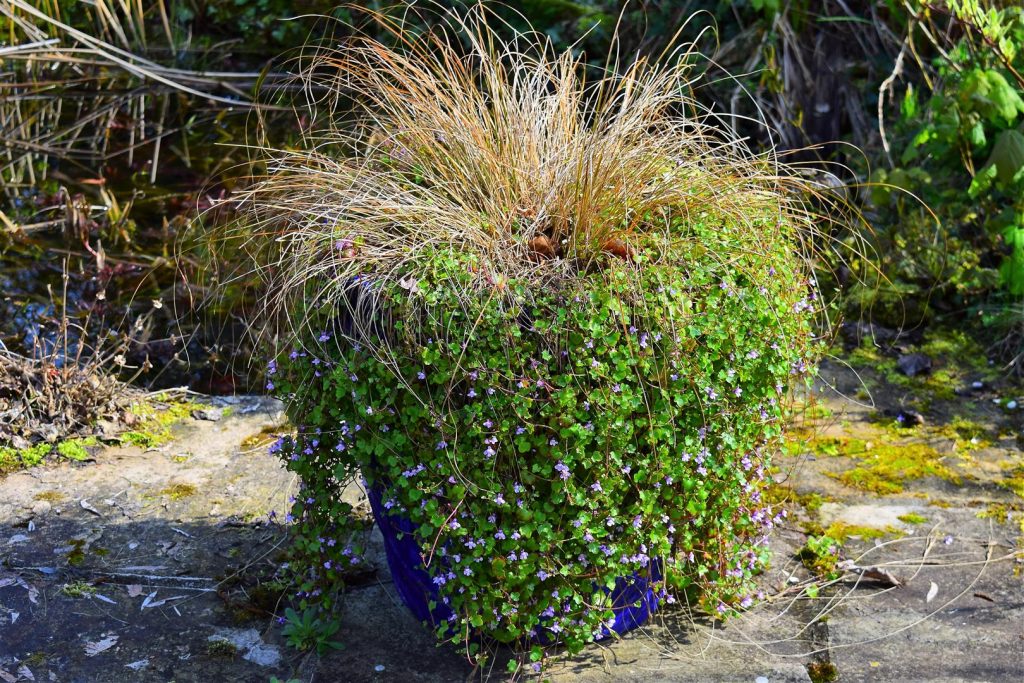
Aquiligea better known as Granny’s Bonnet is a lovely old fashioned cottage garden plant and of course once the commercial growers got their hands on it they customized it to suit demand for flowers on tall sprays . I prefer the old fashioned version which is not so tall and once you have one plant it will happily seed into every part of the garden as it does here in the drier areas .
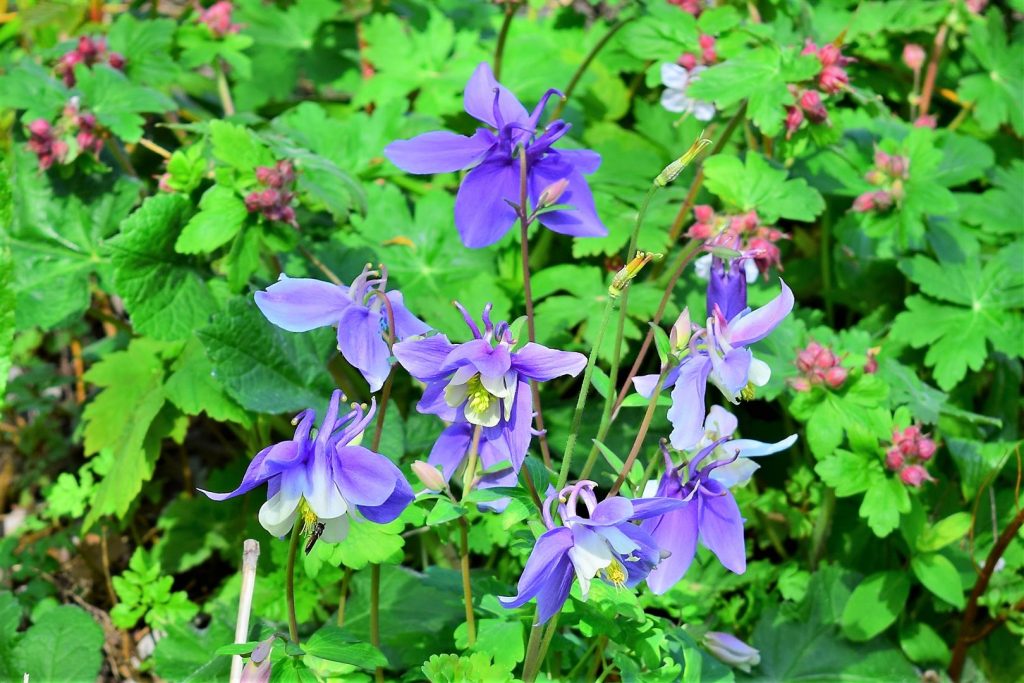
I emphasise drier as very few cottage garden plants will grow or seed into wet ground as for example the cow slip or primula which I have in the back garden , the only one that comes back year after year although I have planted dozens of them over the years and none have survived and it really is Right Plant Right Place .
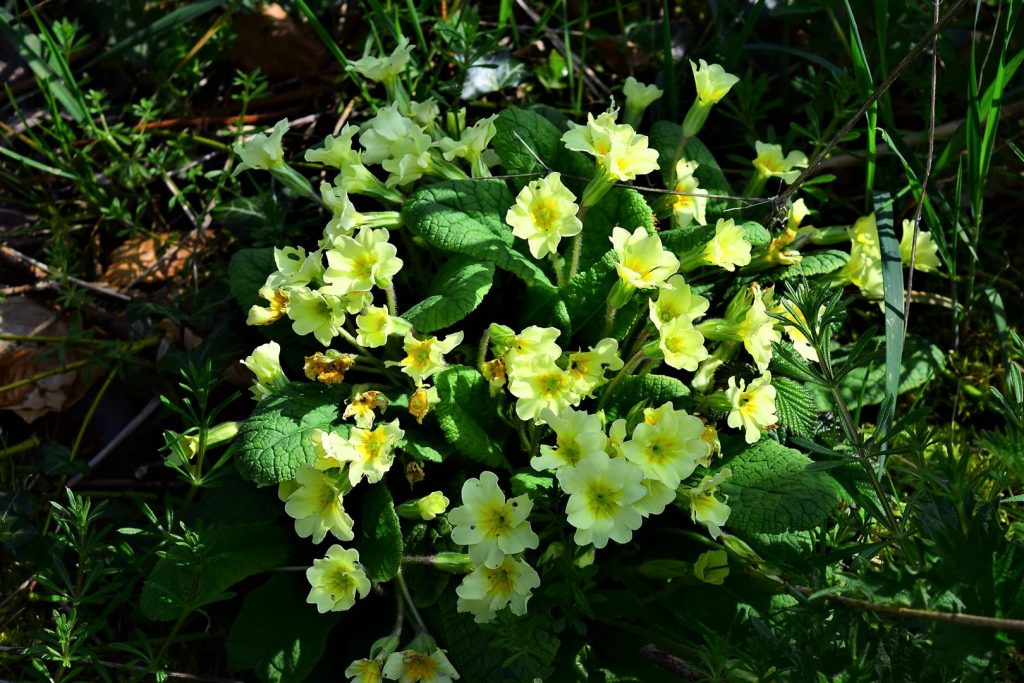
For wet land plants in our experience here you just have to provide the conditions and nature will flock in , brought by birds and wind borne seeds . Visitors here marvel at the amount of marsh marigold , iris , astilbe , meadow sweet , tussock grass , that has colonised whole swathes of the land and are amazed when we tell them that we did not plant even one of these and that after flooding certain areas we left it to nature and within a year or two every available space has been covered and all we have added are a few clumps of gunnera , darmera , hostas and American skunk cabbage , nature abhors a vacuum the saying goes and we are constantly amazed at what springs up in the water areas of the garden .
I didn’t return to Ireland for the next eight years from Bosnia and the Seychelles after we bought the house and surrounding eight acres of wet land in November 2000 . The only planting we did in that first eight years was 500 rooted slips of willow in the wettest areas bought from Terry Hanna at Clonmel Garden Centre and which I planted when home for Christmas in December 2000 … just this week the original invoice turned up in a drawer , brings back all those memories of optimism and hope !


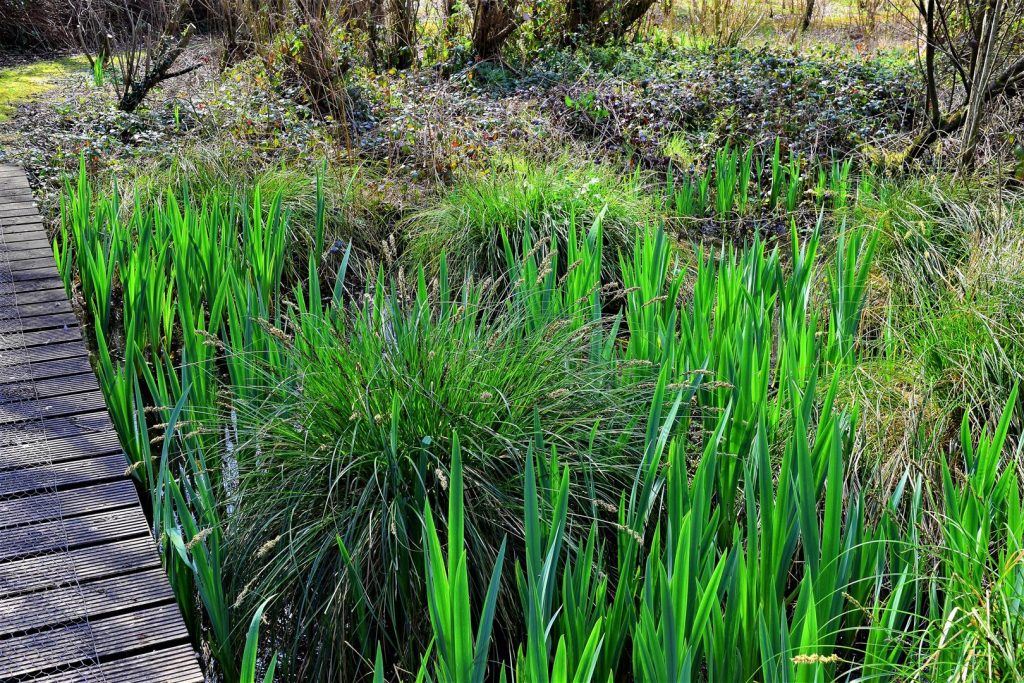
Colour in the Garden , April 2019
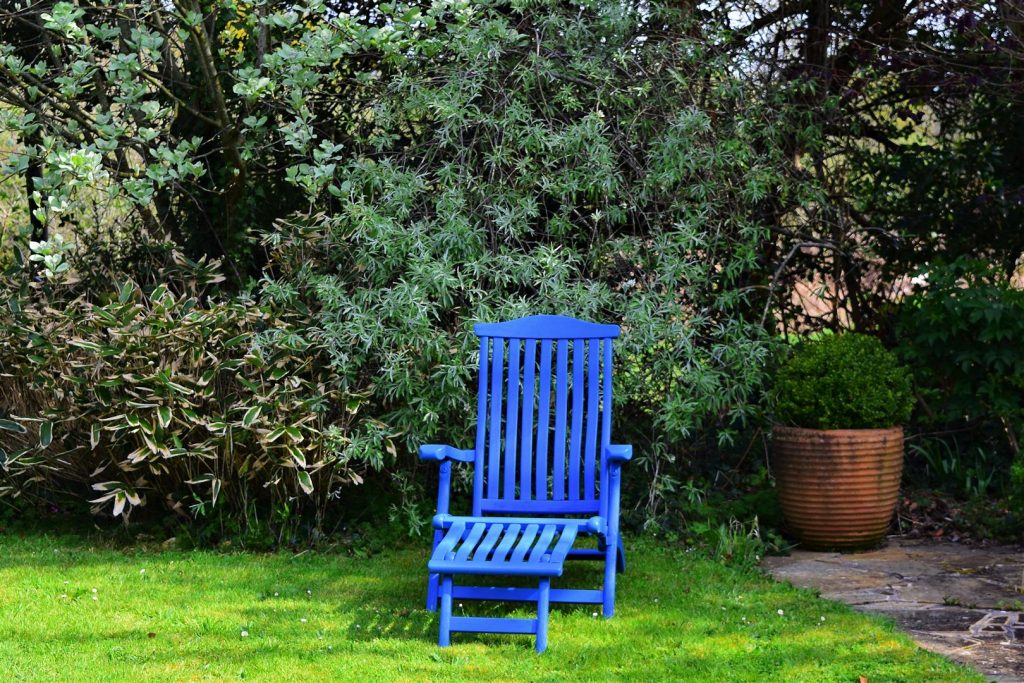

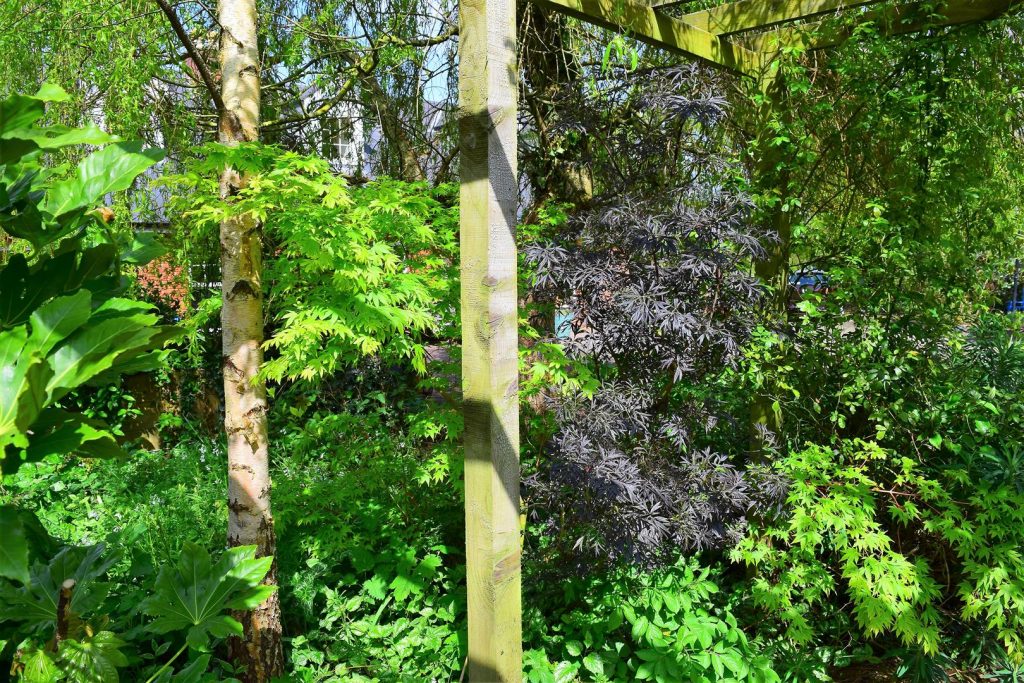
Maintenance in the garden
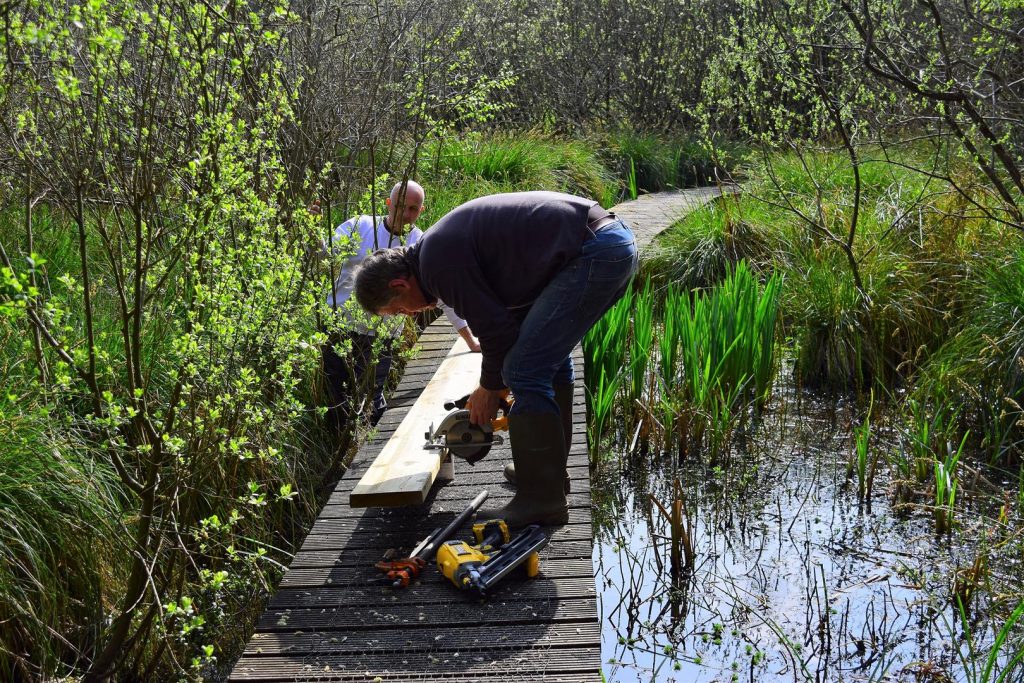
The following is an old English proverb about the joys of gardening and apologies in advance for the sexist nature of it but let me just say it was written in the 18th century when gardening was carried out mainly by men and it is an ENGLISH proverb !
Feel free to adapt it to whatever gender you like and have a Happy Easter !
To be happy for an hour , drink a glass of wine
To be happy for a day , read a book
To be happy for a week , get a wife
To be happy for ever , make a garden


Leave a Reply